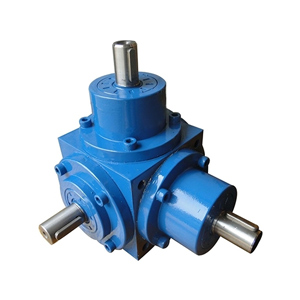Gearbox Troubleshooting
The gearbox system includes gears, driveshafts, bearings and box structures. Among them, the box structure plays a supporting and sealing role in the whole system, and the probability of failure is very low. Therefore, in the gearbox, the failure mainly occurs in the gear, transmission shaft and bearing. According to statistics, gear, shaft and rolling bearing failures account for more than 90% of gearbox failures.
In the fault diagnosis of the gearbox, it is generally only necessary to give whether the fault occurs and the location of the fault to carry out the fault analysis. According to the characteristics of the vibration signal, the common typical fault forms are:
Tooth error
Tooth profile error means that the gear profile deviates from the ideal tooth profile, including manufacturing error, installation error and error generated after service. This mainly refers to the tooth profile error generated after the gear is used, including plastic deformation of the tooth surface, uneven surface wear and surface fatigue, etc. Broken teeth also cause tooth profile errors, but because the characteristics of their vibration signals are significantly different from these tooth profile errors, they are listed as a separate fault form to facilitate fault diagnosis.
Gear wear evenly
Gear uniform wears mainly refers to the phenomenon of material friction damage in the meshing process after the use of gears, mainly including uniform wear of abrasive particles and uniform wear of corrosion. When the gear teeth are uniformly worn, there will be no serious tooth profile error, and the characteristics of the vibration signal are also very different, so it is not attributed to the tooth profile error.
Shaft misalignment
Shaft misalignment mainly refers to the fact that the shafts at both ends of the coupling are parallel but misaligned due to problems in the design, manufacture, installation or use process, causing the gears on the shaft to produce distributed tooth profile errors. The difference between the vibration signal and the tooth profile error of a single gear is that when the shaft is misaligned, the gears on all shafts will produce tooth profile errors and cause signal modulation.
Broken tooth
Broken teeth are a serious fault of gears, mainly in two forms: fatigue broken teeth and overloaded teeth, most of which are fatigue broken teeth. When the tooth is broken, the vibration signal has large impact energy, which is different from the tooth profile error and the uniform wear of the gear
Box resonance
The box resonance is a resonance phenomenon caused by the excitation of the natural frequency of the gearbox box by the impact energy. The resonance of the box body produces a large amount of shock vibration energy, which is a very serious fault and is generally caused by the external excitation of the box body.
Shaft slightly bent
The gearbox center shaft also frequently fails. When the shaft is slightly bent, it can also cause tooth profile errors on the gears on that shaft. Unlike the single gear profile error fault, when the shaft is bent, all gears on the shaft will have a large profile error.
Severely bent shaft
Severely bent shafts are a more serious form of failure in gearboxes. When the shaft is severely bent, large impact energy will be generated, resulting in serious consequences, and its vibration signal is also different from mild bending.
Shaft unbalance
Shaft imbalance is a typical failure of a shaft in a gearbox. Unbalance refers to the unbalanced vibration of the shaft due to the existence of eccentricity, which can be caused by deformation after manufacture, installation and use. When the shaft is unbalanced, the tooth profile error will also be caused in the gear transmission, but this kind of fault is obviously different from the simple tooth profile error.
Axial play
Axial play mainly occurs when helical gears are used. When there are two helical gears engaged in meshing at the same time on the same shaft, and there is no good positioning and locking device in the axial direction, sometimes the phenomenon of axial play occurs, which is mainly caused by the unbalanced axial force. of. Axial play will seriously affect the accuracy and stability of gear transmission, and may also cause impact wear on the end face of the gear teeth, which is a serious fault.
Bearing fatigue spalling and pitting
Typical failures of rolling bearings in gearboxes are fatigue spalling and pitting of the inner and outer rings and rolling elements. As the shaft rotates, the inner and outer rings and the rolling elements experience mechanical shock during contact, producing a force with a large variation called shock pulse. When the rolling bearing in the gearbox fails, its energy is much smaller than the vibration energy generated by the gear, so it is one of the difficulties in diagnosis.
The above are common troubleshooting of gearboxes. When the planetary gearbox, right angle gearbox, and worm gearbox have the above problems, fault diagnosis can be carried out in time. If you have a problem that cannot be solved, please contact us in time.

